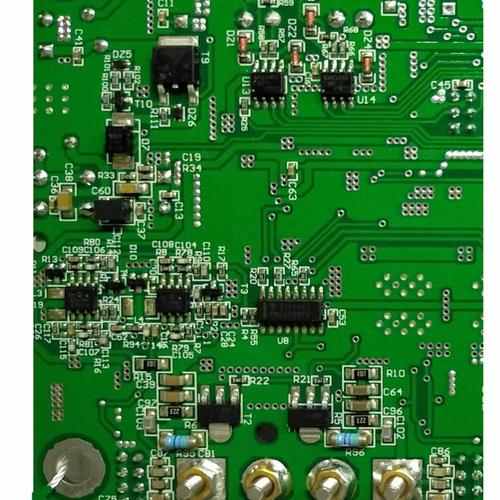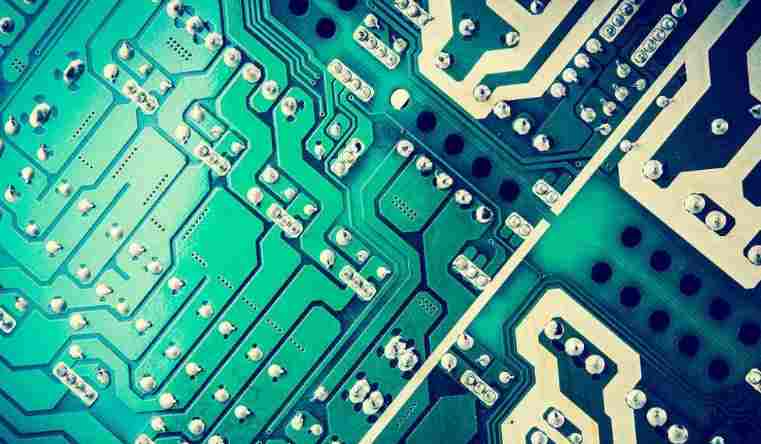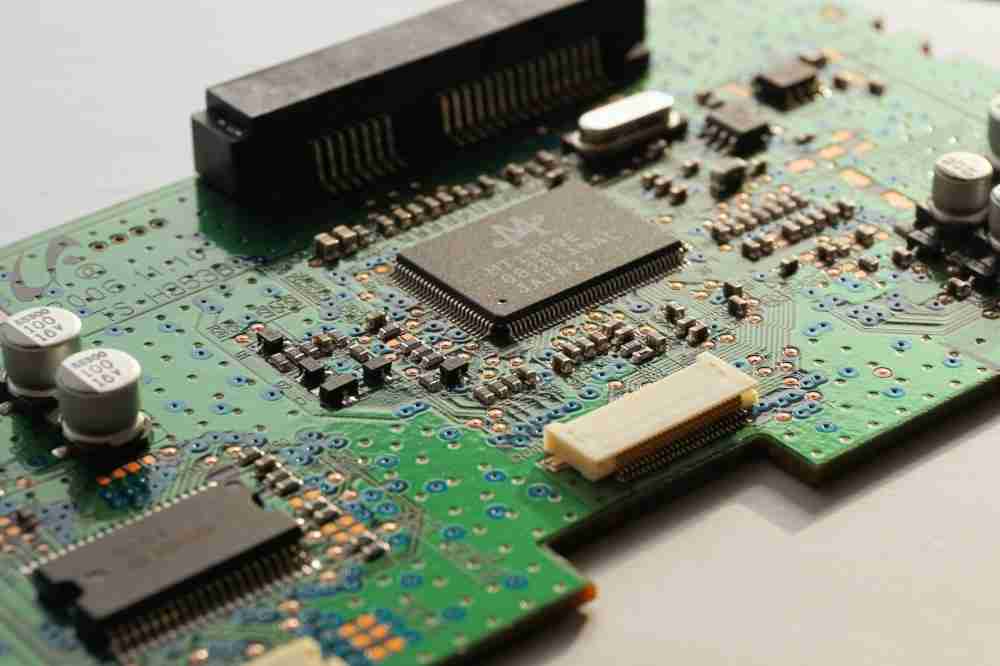
Circuit board bubbling is actually the board surface joint force is not good problem, and then extension is the appearance of the quality of the board, this surface contains two aspects of the internal significance: the problem of cleaning degree of the board; The problem of microscopic finish (or appearance energy).
All the bubbling problems on the PCB circuit board can be summarized as the above end.
The bonding force between the coatings is not good or too low, and it is not easy to resist the coating stress, mechanical stress and thermal stress generated during the production and processing process and assembly process in the subsequent production and processing process, and finally lead to different degrees of clutch phenomenon between the coatings.
It is possible to lead to the poor quality of the board in the production and processing process of the point summary summarized as follows:
1. Problems of substrate processing:
Especially for a thin substrate (ordinary 0.8mm below), due to the poor rigidity of the substrate, it is not suitable to brush the board.
So there may be no way to get rid of the substrate production process to avoid copper foil oxygen and special disposal to take care of the layer, although the layer is thin, brush plate is easier to get rid of, but that the use of chemical disposal is more difficult, so in the production and processing close attention to control, Lest lead to the surface of the substrate copper foil and chemical copper between the joint force is not good resulting in bubbling problems; This problem in the thin inner layer of blackening, there will also be bad blackening brown, uneven color, part of the black brown is not equal to the high level of the problem.
2. The surface of the board in machining (drilling, laminating, milling, etc.) process caused by oil or other liquids contaminated with dust pollution surface disposal phenomenon.
3. The copper brush plate is not good:
The pressure of grinding plate before copper sedimentation is too large, resulting in the orifice deformation brush out the orifice copper foil fillet or even the orifice leakage substrate, which will lead to the orifice foaming in the process of copper plating, tin-spraying, welding, etc. Even though the brush plate does not lead to leakage of the substrate, the heavy brush plate will increase the finish of the copper orifice, so in the process of micro-etching coarsening, the copper foil is easy to initiation of excessive coarsening phenomenon, there will be certain hidden dangers of quality; Because of this should pay attention to enhance the control of the brush process, you can pass the abrasion mark attempt and water film attempt to brush the process parameters to the best;

4. Washing problem:
Due to the copper plating disposal through a large number of chemical water treatment, various acid, alkali, inorganic and other drugs more solvents, the board washing is not clean, especially copper debugging degrease agent, not only will lead to the transaction of pollution, but also will lead to bad disposal of the board part or treatment effect is not good, the lack of full edge, leading to the problem of point joint force; Because of this, we should pay attention to strengthen the control of washing, mainly covering the cleaning water flow, water quality, washing time, and plate dripping time, etc.; Especially in winter, the temperature is low, the effect of washing will be greatly reduced, more attention should be paid to the strong control of washing;
5. Micro-etching in copper deposition and graphic electroplating treatment:
Excessive microerosion will lead to the leakage of substrate, resulting in bubbling around the orifice; Insufficient micro-etching will also lead to insufficient bonding force, leading to foaming phenomenon; Because this is going to increase the containment of microerosion; The micro corrosion depth of ordinary copper deposition before treatment is 1.5- 2 microns, and that of graphic electroplating before treatment is 0.3- 1 micron. If possible, it is best to control the micro corrosion thickness or the corrosion efficiency by chemical analysis and simple attempt weighing method. Ordinary things under the condition of micro corrosion of the surface color bright luster, for the average peach, no reflection; If the color is uniform, or there are reflections, explain the hidden quality problems before processing; Pay attention to enhance the investigation; The copper content of additional micro-etching tank, tank liquid temperature, load, micro-etching content, etc., should be paid attention to;
6. Sinking copper is not good:
A bit of sunk copper or graphics after the reworking board in the reworking process due to fading plating is not good, the reworking method is wrong or the reworking process of micro corrosion time is not appropriate or other causes will lead to bubbling board; If the copper plate on the line is not found sinking copper can be washed directly from the line after oil removal after pickling without corrosion directly reworking; It is best not to remove oil from the new, micro corrosion; For the plate that has been electrically thickened, the plating should be removed by micro-etching groove and pay attention to time control. One or two plates can be used to estimate the plating time at a time to ensure the plating effect; After the plating is finished, a set of gentle entanglement brush is applied after the brush machine, and then copper deposition is carried out according to the normal production process, but the etching time should be cut in half or debugging is indispensable;
7. The board surface oxygenates in the production process:
If the copper plate oxygenates in the air, it may not only lead to no copper in the hole, the board is not delicate, but also may lead to bubbling; Copper plate in acid storage for a long time, the surface will also occur oxygen, and the oxygen film is difficult to get rid of; Because this in the production process of copper plate as early as possible to thicken the disposal, is not suitable for storage and placing time is too long, ordinary at the latest
Copper plating should be thickened within 12 hours;
8. The activity of copper settling liquid is too strong:
The high content of the three components in the newly opened cylinder or tank of the copper solution, especially the high content of copper, will lead to the activity of the tank solution is too strong, the chemical copper deposition is not fine, hydrogen, cuprous oxygen compounds in the chemical copper layer doping too much, resulting in the deterioration of the physical quality of the coating and poor bonding force. The following measures can be taken appropriately: reducing the copper content,(adding pure water to the tank) covering the three components, increasing the content of the chelating agent and the stabilizing agent, reducing the temperature of the tank, etc.;
9. In the process of graphic transfer, insufficient washing after development, too long placement time after development or too much dust in the workshop, will lead to poor cleaning of the board, the treatment effect of fiber is slightly poor, it may lead to latent quality problems;
10. Organic pollution, especially oil pollution, is revealed in the plating tank, which is more likely to be revealed for semi-automatic wire.
11. Copper plating pretreatment acid tank should pay attention to change as early as possible. There is much pollution in the tank, or the copper content is too high, which will not only lead to the cleaning degree of the board, but also lead to the lack of fine surface.
12. In addition, at one point in winter when the factory produces the tank liquid without heating, it is more important to increase the electric flow of the production process plate into the tank, especially the plating tank with air mixing, such as copper nickel; For the nickel cylinder in winter, it is best to add a warm water bath before nickel plating,(the water temperature is about 30-40 degrees), to ensure that the nickel layer at the beginning of a period of time of detailed and precise deposition is satisfactory;
In the actual production process, there are many causes of the driving plate surface bubbling, the author can only do a simple and concise analysis, for different PCB manufacturer facilities technical level may reveal different causes of bubbling phenomenon, specific things to be specific analysis, can not be taken together, copy; The end of the above analysis regardless of primary and secondary and relevance, basically in accordance with the production process to do a simple and concise analysis, in this series, just to provide you with a direction to solve the problem and a broader perspective, expect to everyone's process production and problem explanation questions, can play a role in attracting jade!







